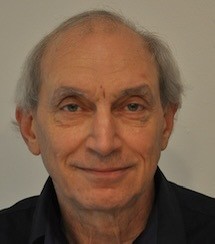
姓名:Robert Levine
研究方向:formal logic, syntax, semantics, and language and translation
电子邮箱:levine.1@osu.edu
个人简介:
Robert Levine received his Ph.D. from Columbia University and is currently employed at The Ohio State University in the United States. He has made significant achievements in the field of linguistics. His research, which covers multiple cutting-edge areas including formal logic, syntax, semantics, and language and translation, demonstrates the extensiveness of his academic exploration.
Robert Levine actively participates in international academic exchanges and cooperation. He has conducted visiting research at many world-renowned universities, establishing profound academic connections with scholars from around the globe. At the same time, he serves as a reviewer for several authoritative linguistics journals and an evaluation expert for international academic conferences, including Natural Language and Linguistic Theory, Journal of Linguistics, Linguistics and Philosophy, Language, Computational Linguistics, etc. His professional insight and academic contributions have been widely recognized in the international academic community. His Google Scholar h-index is 27, with 2,438 citations including monographs, articles and conference proceedings papers.
教育经历:
BA, Columbia College of Columbia University, 1968
Ph.D, Columbia University, 1977
工作经历:
2006-, Ohio State University, professor
1994-2006, Ohio State University, associate professor,
1986-1988, Columbia University, lecturer
1973-1974, Idaho State University, lecturer
代表性成果:
Books:
[1] In press. Type Logical Grammar: A Syntactic Introduction. Cambridge University Press.
[2] 2020. Type Logical Syntax. Massachusetts Institute of Technology Press.
[3] 2017. Syntactic Analysis. Cambridge University Press.
[4] 2006. The Unity of Unbounded Dependency Constructions. Stanford University.
[5] 1999. Studies in Contemporary Phrase Structure Grammar. Cambridge University Press.
[6] 1992. Formal Grammar: Theory and Implementation. Oxford University Press.
Articles:
[1] 2022. Embedded-complement and discontinuous pseudogapping in Hybrid Type-Logical Grammar. The Linguistic Review 39. 4. pp. 143–153.
[2] 2021a. The logic of the English auxiliary system. Logical Aspects of Computational Linguistics 10. Berlin: Springer.
[3] 2021b. NPI licensing and the logic of the syntax-semantics interface. Linguistic Research 38. 2. pp. 151–205.
[4] 2018. “Biolinguistics”: Some foundational problems. In Essays on Linguistic Realism, ed. by Christina Behme and Martin Neef. Amsterdam: John Benjamins. pp. 21–59.
[5] 2017a. Pseudogapping as pseudo-VP ellipsis. Linguistic Inquiry 48. pp. 213–257.
[6] 2017b. Scope parallelism in coordination in Dependent Type Semantics In New Frontiers in Artificial Intelligence. Berlin: Springer. pp. 79–92.
[7] 2016a. Gapping as hypothetical reasoning. Natural Language and Linguistic Theory 34. 10156.
[8] 2016b. The syntax-semantic interface of respective predication: a unified analysis in Hybrid Type-Logical Categorial Grammar. Natural Language and Linguistic Theory 34. pp. 911–973.
[9] 2015. Against ellipsis: Arguments for the direct licensing of ‘non-canonical’ coordinations. Linguistics & Philosophy 38. pp. 521–576.
[10] 2013. The modal need VP gap (non)anomal. In Beyond ever and any: New Perspectives on Negative Polarity Sensitivity, ed. by Eva Csipak, Regine Eckhardt, Mingya Liu, and Manfred Sailer, pp. 241–265. Berlin: Mouton de Gruyter.
[11] 2012. Auxiliaries: To’s company. Journal of Linguistics 48. pp. 187–203.
[12] 2010. The ass camouflage construction: masks as parasitic heads. Language 86. pp. 265–301.
[13] 2009. Extraction in Head-driven Phrase Structure Grammar. Language and Linguistics Compass 3(4). 10521075. Blackwells.
[14] 2004. The syntax of extraction: derivation or constraint satisfaction?. Empirical Issues in Formal Syntax and Semantics, Presses de l’Universit/e de Paris-Sorbonne.
[15] 2003. Wh nonmovement. Journal of the Linguistic Society of Japan. pp. 171–219.
[16] 2002. Review of Rhyme and Reason, by Juan Uriagareka, MIT Press. Language 78. pp. 325–330.
[17] 2002. Review of Local Constraints versus Economy, by David Johnson and Shalom Lappin, CSLI. Journal of Linguistics 38. pp. 177–179.
[18] 2001. The Revolution maximally confused. Natural Language and Linguistic Theory 19. pp. 901– 919.
[19] 2001. Stylistic inversion in English: a reconsideration. Natural Language and Linguistic Theory 19. pp. 283–310.
[20] 2001. The extraction riddle: just what are we missing? Journal of Linguistics 37. pp. 145– 174.
[21] 2001. Parasitic gaps in English: some overlooked cases and their theoretical implications. In Parasitic Gaps, edited by Peter Culicover and Paul Postal, MIT Press.
[22] 2000. The Revolution confused: a reply to our critics. Natural Language and Linguistic Theory 18. pp. 873–890
[23] 2000. The structure of unscientific revolutions. Natural Language and Linguistic Theory 18. pp. 665–671.

